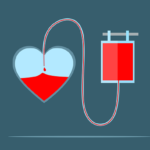Flu and cold usually accompany each other when attacking a child’s immune system. It is a widespread viral infection and the harsh truth is that there is no permanent treatment designed for it because of the involvement of many types of viruses that cannot be killed, but yes their growth rate can be suppressed. Symptomatic treatments can trigger the rate of improvement in the child’s health, but it might not work for all kids.
The child can get affected by the flu and cold virus when he is exposed to an infected person. The symptoms are mild headache, the feeling of tiredness, stuffy or runny nose, watery eyes, light fever, sneezing, cough, muscle aches, and sore throat. It takes two to five days for the symptoms to appear and three to five days for the complete development of the virus. It takes nearly two weeks to completely get rid of the flu. The virus attacks the upper respiratory system. These are the symptoms of a cold. The symptoms of flu are more terrible than cold and grow very rapidly.
They are high fever, runny nose, sore throat, nasal congestion, chills, fatigue and nausea, vomiting, eye pain, and extreme headache. Symptoms are extremely important when trying to differentiate between flu and a cold. As stated before, the symptoms of flu are more severe when compared to the symptoms of a cold. Also, it is easier to get over a cold than the flu. The biggest clue will be recalling any incident of exposure to patients having either flu or cold. Even after a thorough analysis, if it is difficult to reach any clear conclusion, a doctor should be consulted. A swab is taken from the nasal track or throat and the results are determined an hour after the test is taken.
No antibiotics work on these viruses. Intake of antibiotics cannot better the condition in any way whatsoever. Also, there are chances of secondary bacterial infections like sinus or ear infections. The child should be administered fluids and a cool-mist humidifier to suppress the symptoms and to help him feel better.
Medications are available over the counter and can be bought depending on the symptoms of the infected. Antiviral medicines are available for the treatment of flu, which hastens the recovery process. But the medicines are effective only when given within forty-eight hours after the onset of flu symptoms. Runny noses, especially of infants and kids who cannot blow their noses, can be taken care of with the help of a bulb syringe or nasal drop. If flu isn’t treated at the right time, it can worsen the health of the infected and can also lead to pneumonia.
Flu is a very commonly spreading infection among school-going kids. According to research, nearly twenty percent of Americans are infected with flu every year and nearly twenty thousand people die because of it. The only way to prevent the child from contracting this virus is by getting him/her a flu shot before the flu season or as recommended by the physician. The vaccine is either administered through a shot or nasal spray.
Regular dosage will strengthen the immune system by constructing antibodies. The nasal spray vaccine contains live weakened viruses and shots contain completely dead viruses. By any chance, if the child does get exposed to the virus, he/she should be given medicine meant for flu patients, immediately. More than a hundred viruses are known which cause cold. A lesser number of viruses are known to cause flu. That is the reason why there is a shot for flu and not cold.
But flu shots cannot be taken by anyone or everyone. People who complain of allergic reactions from previous flu shots, people who have the Guillain-Barre syndrome, and people allergic to eggs are not eligible for flu shots. It is highly recommended to take advice from a physician before getting vaccinated. Children and the elderly should be given nasal spray vaccination, but instead, they should opt for flu shots. Out of the total population, there are certain people who have a greater probability of getting flu. Children up to five years of age, elders older than sixty-five years, nursing home residents, pregnant women, patients with long-term problems regarding health, and health care workers who come directly in contact with flu patients.
Visits: 0










